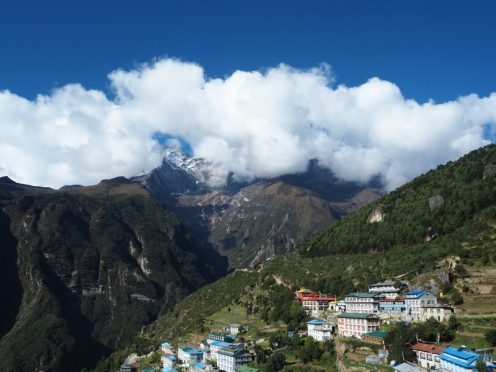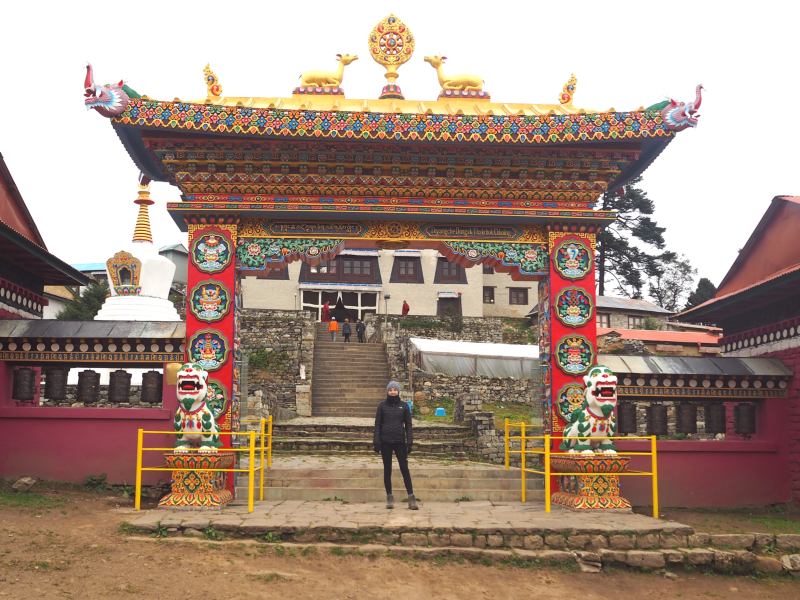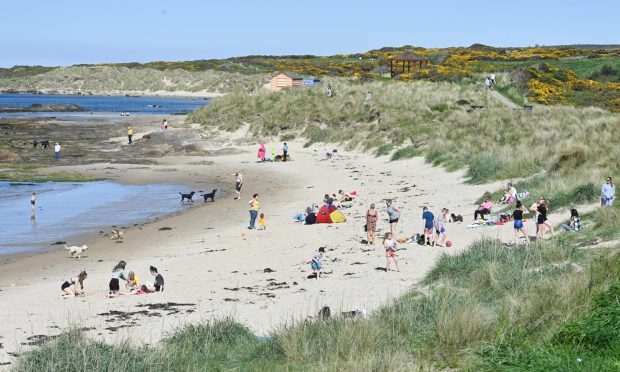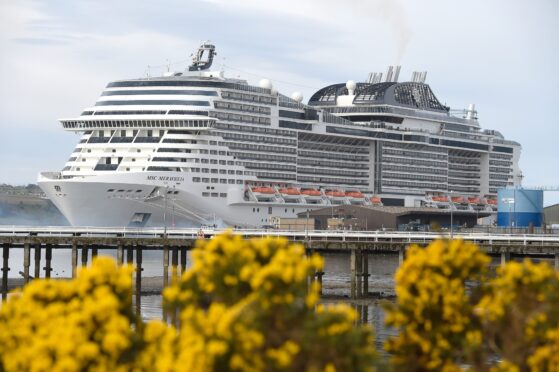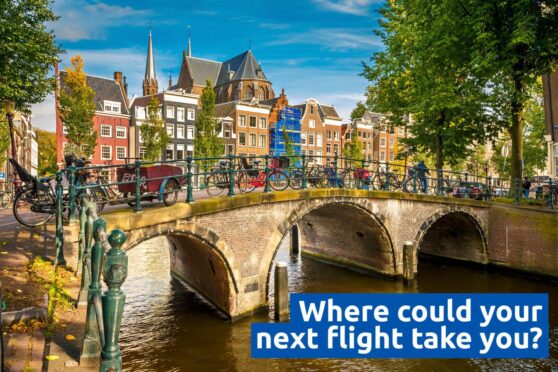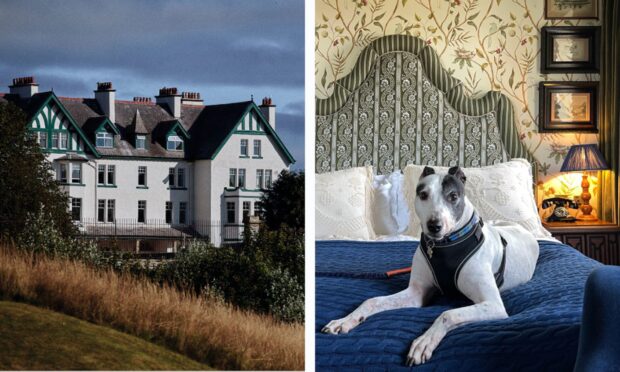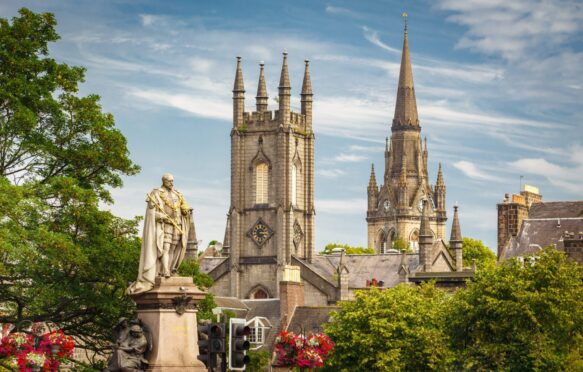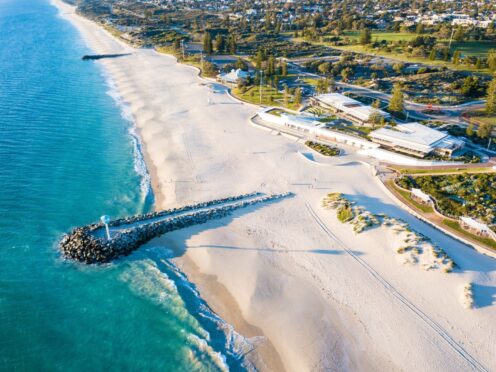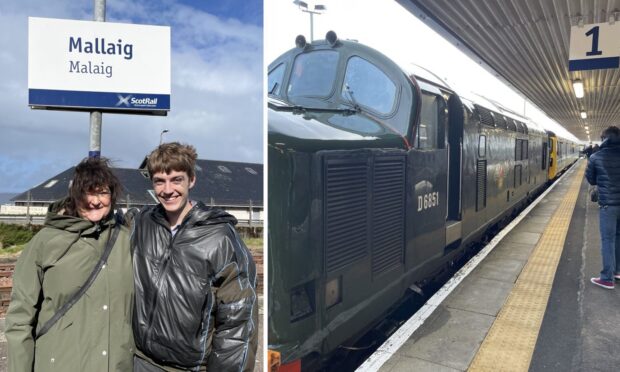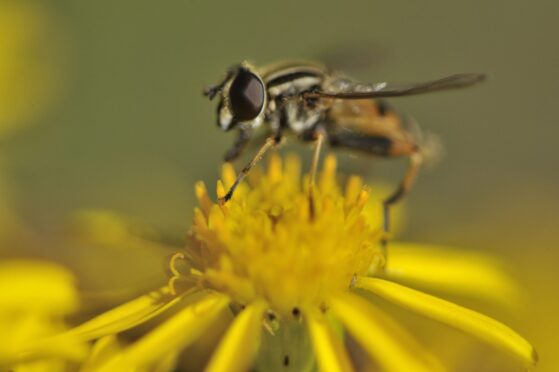Spurred on by the challenge of tackling the world’s tallest mountain, Iona MacGowan travelled to Nepal for 13 days of trekking
The trek to Everest Base Camp, Nepal, would take thirteen days; nine making the ascent and three heading back down. It would take me to the height of 5,340m, 4 times the height of Ben Nevis, a seemingly achievable goal; certainly more so than that of tackling Mount Everest, the world’s highest peak at 8,850m. I prepared myself for the elements as well as I could with warm clothing and strong boots, however, what I could not prepare for were the effects of altitude on the body, the impact of which caused 6 members of my trekking party to be air-lifted down the mountain.
‘PLEASE DO NOT OPEN THE WINDOW BECAUSE OF MONKEY’S’ I read aloud to myself as I opened the curtains to gaze over the bowl-shaped valley of Kathmandu, on our first day in central Nepal.
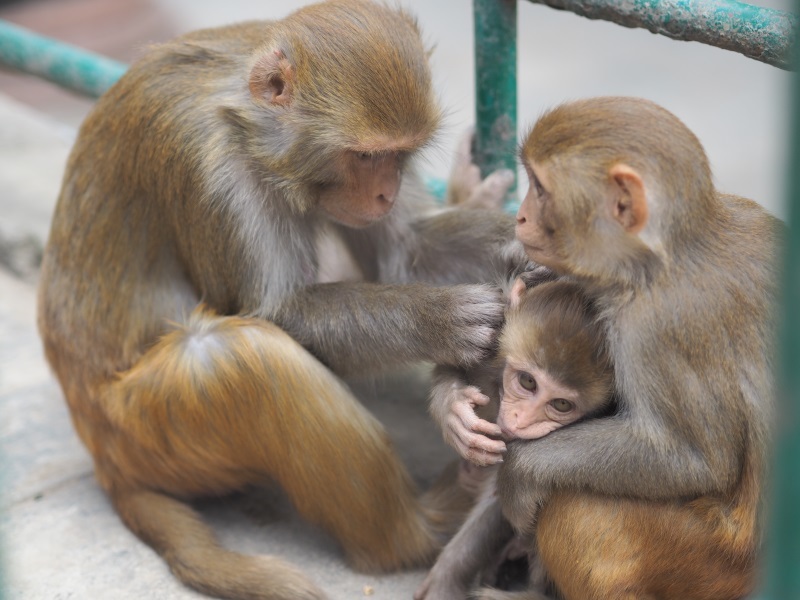
Kathmandu is the largest metropolis in Nepal and has a multi-ethnic population with a Hindu and Buddhist majority. It is the centre of Nepal’s history, art, culture and of course – tourism economy, and is often described as the gateway to the Himalayas.
In 2013, Kathmandu was ranked third among the top ten upcoming travel destinations in the world by TripAdvisor, and it’s easy to see why. In my short two days in Kathmandu, I was overwhelmed by the sights, smells and culture the city had to offer, including food, temples and sacred and religious sites.
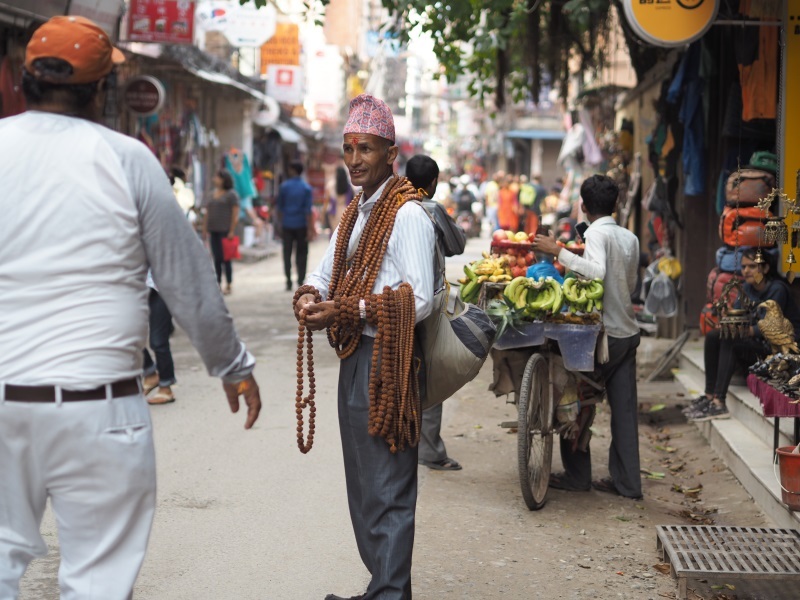
Once in Nepal, you start your trekking adventure to EBC (Everest Base Camp) by taking a short but bumpy flight to the Tenzing-Hillary ‘airport’ in the village of Lukla; which in reality is just a small strip of tarmac precariously perched on the edge of a cliff. I later learnt that it is the most dangerous airport in the world! It was fascinating to watch the dense, congested urban mass of Kathmandu slowly fade beneath us as the small plane gained height, the landscape gradually evolving into a green mosaic of small-scale agricultural terraces hugging the hillside.

The first three days of trekking took us down into the valley of the Dudh Kosi (River of Milk) and the village of Phakding, from where we would start to climb to the Sherpa Village of Namche Bazaar (3,500m). I found these first days of trekking enjoyable; although I was surprised by the tropical heat and humidity bearing down upon us, when in my mind I had imagined and thus prepared for cold winds, ice and snow. When we arrived in Phakding, we were so hot and dusty that many of us went down to the river and sunbathed, some even daring to dip their already aching and swollen feet into the freezing glacial torrent.
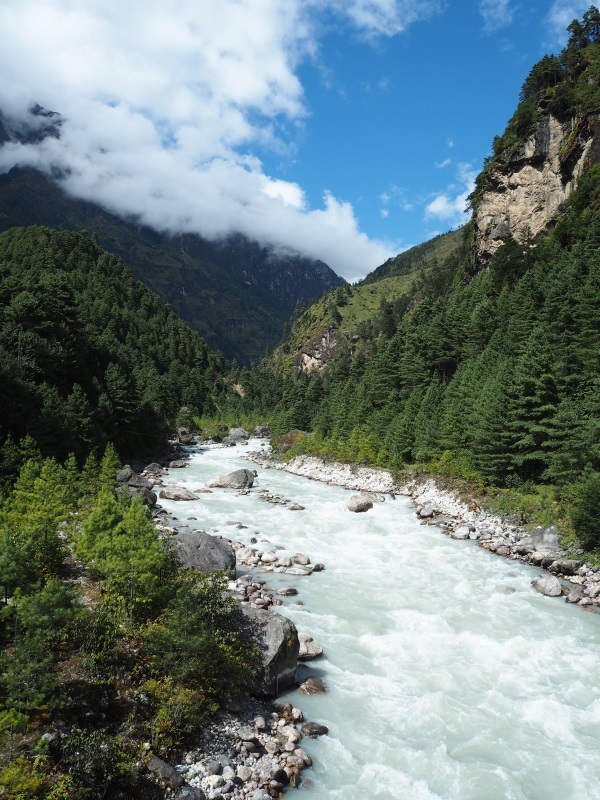
The humid forest was steamy and dusty underfoot, we passed roaring waterfalls and huge glacier smoothed boulders, their surface painted black and white with Tibetan Buddhist prayers. The trek also involved crossing many dizzying suspension bridges, often sharing them with heavily laden porters and bellowing cattle.
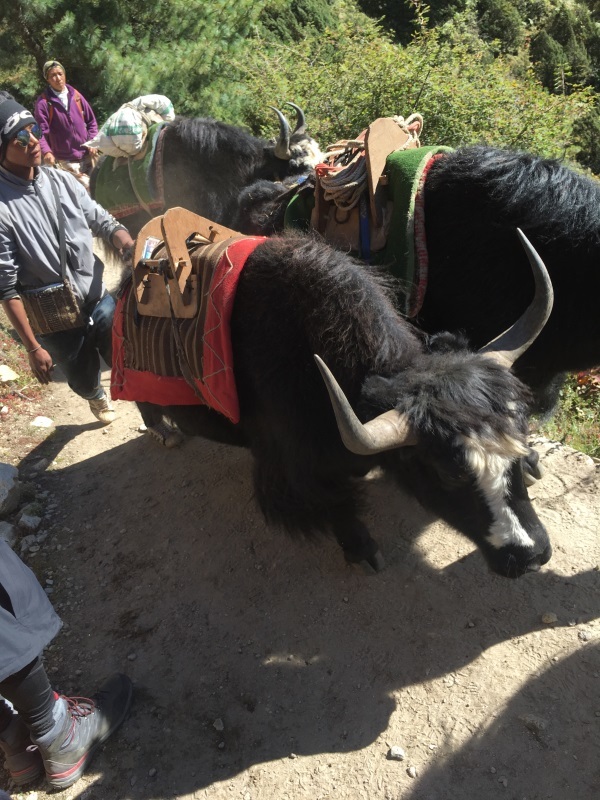
We came to the most impressive gorge on day three, the crossing comprising of two huge suspension bridges swinging gently over the roaring Dudh Kosi, the old bridge swaying 20ft beneath the new, almost entirely covered in the streaming bright colours of Buddhist Prayer flags.

The path to Namche is very well travelled and as a result, we became tangled in a constant throng of traffic comprised of other trekkers, local villagers, porters laden with heavy rucksacks and trains of Yak. It was also fascinating to discover many traditional huts situated alongside the new buildings constructed to accommodate the booming tourist trade. The growing impact of tourism was particularly apparent when we reached Namche; a large market town situated on the steep slope of a mountain. Despite being relatively isolated in this Himalayan valley I was taken aback by the number of modern amenities it had to offer, complete with shop, bars and even Wi-Fi. It wasn’t quite the quaint Sherpa hillside village I had imagined, and I worried how commercialised the rest of our trip would be. However, after dinner, our trekking group did make full use of ‘The World’s Highest Irish Pub’.
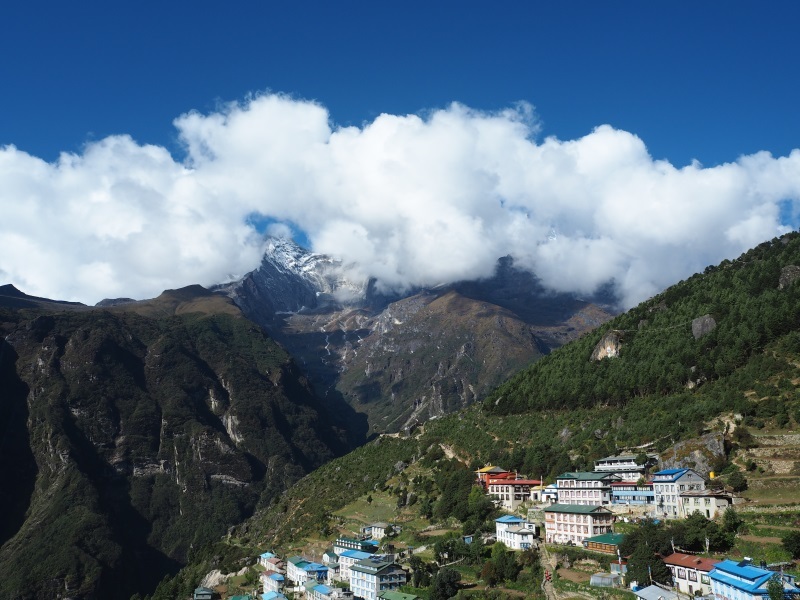
Days four to seven took us from the village of Tengboche (3,860m), through Dingboche and then onto Lobuche (4,940m). Day four of our trek quite literally took us up into the clouds. The lack of oxygen at this height (3,860m) could now be seen to be taking effect on our group, most of whom were finding it hard going.
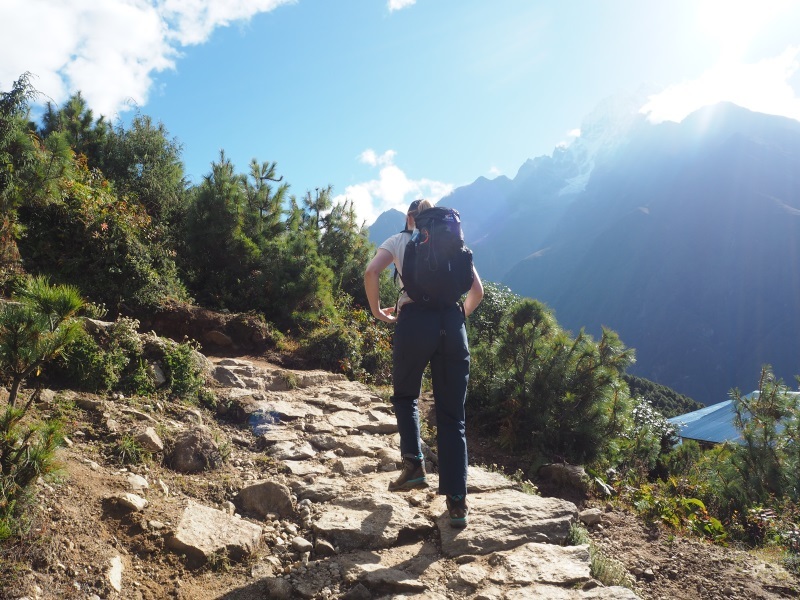
The surrounding environment was also changing. The lush green valleys had disappeared in the mist below and were replaced with exposed rock-strewn hillsides. Most of the day was overcast, the clouds only breaking in the morning to reveal the panoramic views of shimmering white mountain peaks contrasted against the dawn skyline. It was in this clear morning air that Tengboche offered us our first view of the distant Mount Everest; a small, seemingly insignificant high ridge of snow and ice hiding behind Lhoste, the world’s fourth highest mountain (8,516m). I didn’t know at the time, but this would be the first and the last time I would have my eyes on the fabled, Mount Everest.
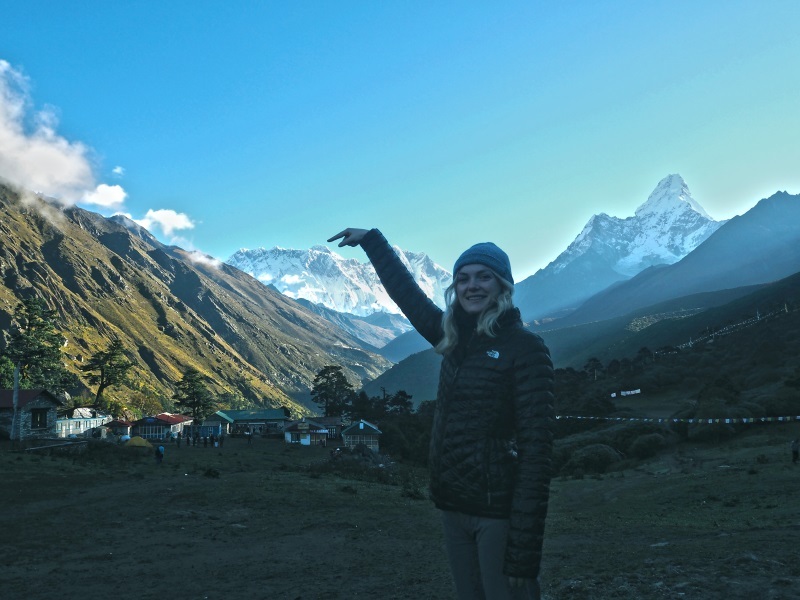
Tengboche is also famous for its Buddhist monastery, which is the largest in the Khumbu region; we were invited to witness a traditional Buddhist ceremony at sunrise, the spirituality of the temple only enhanced by its stunning Himalayan setting. It was inspiring to step into a place where so many trekkers before us had worshipped, including Tenzing Norgay, the first man to reach the summit of Mount Everest with Sir Edmund Hillary.
I made a donation and offered a silent prayer of hope to the gods of the mountain, hoping that they would look favourably on my group and ensure our continued safe passage to our goal of Everest Base Camp.
HOLIDAY FACTS – INDIA & NEPAL – 15 DAYS FROM £2,399
- Return flights from the UK, plus all hotel transfers
- Tour of India’s greatest sights including; the Ganges at Varanasi, Taj Mahal and Nepal’s majestic mountains
- Visit Kathmandu, the centre of Nepali culture and wander through Patan Durbar Square
- Take one of the world’s most exciting flights to uniquely see Mt Everest and Himalayas from the air
- Take a once-in-a-lifetime elephant-back safari through the lush forests of Chitwan National Park in search of rhinos
- Daily breakfast and five meals included
- The services of our experienced and insightful tour manager throughout
- Click here to view tour
